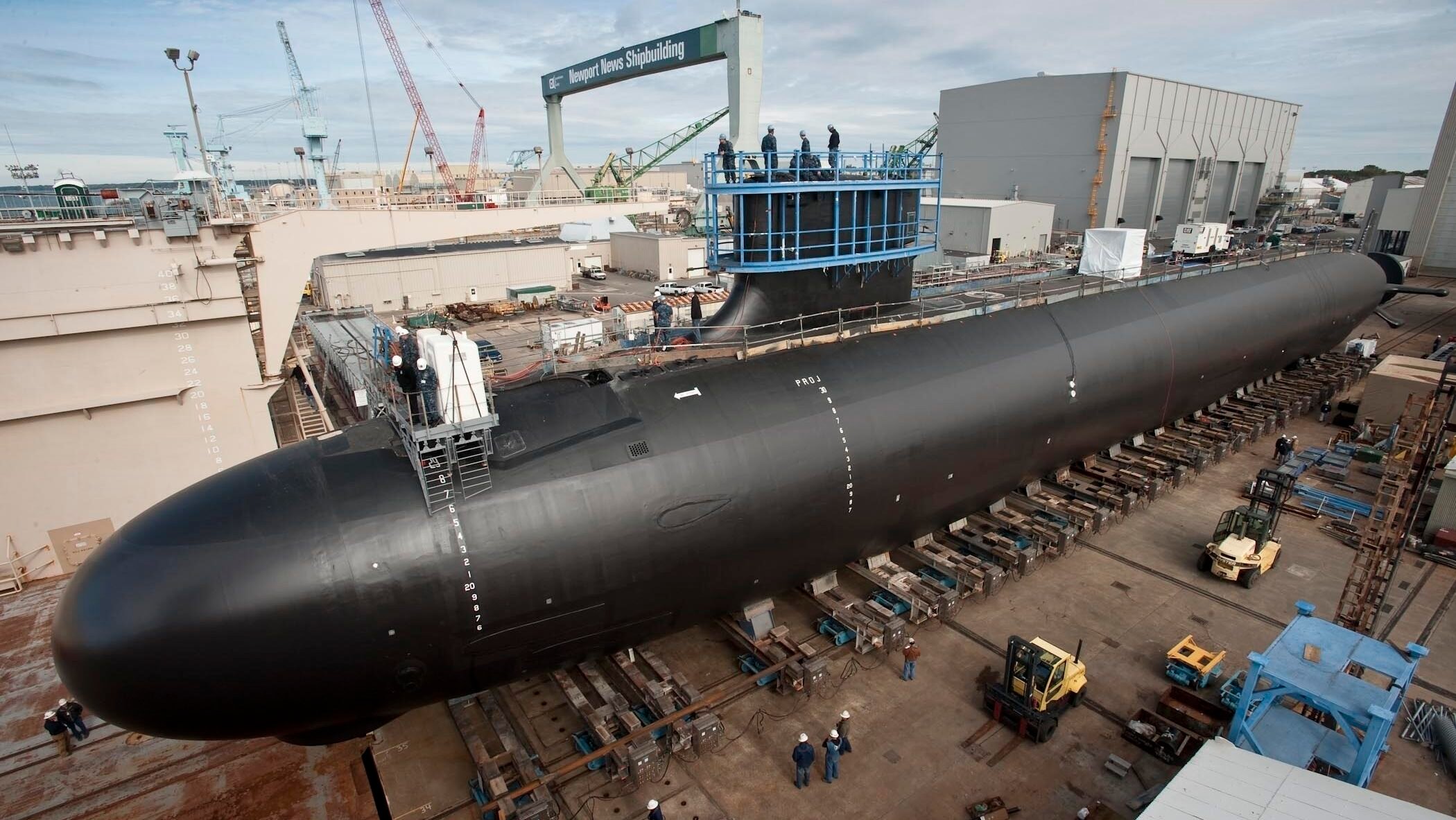
The Virginia-class attack submarine Minnesota (SSN 783) while at HII’s Newport News Shipbuilding. (U.S. Navy photo courtesy of Newport News Shipbuilding/Released)
WASHINGTON — Ahead of senior Navy officials testifying before House lawmakers today, a top Democrat is rejecting the Navy’s stated reasoning for purchasing a single Virginia-class submarine in fiscal year 2025.
“I’m very familiar with all the arguments in terms of production cadence,” Rep. Joe Courtney, D-Conn. told a small group of reporters earlier this week. “But in my opinion, the Navy is looking backwards, not forwards, in terms of what’s actually happening in the shipyards with this proposal.”
Courtney is the ranking member of the House Armed Services Seapower and Projection Forces subcommittee, which oversees the service’s shipbuilding budget. That subcommittee is scheduled to hold a public hearing with senior Navy acquisition officials about the FY25 budget which, to the irritation of Courtney and likely others on the panel, opted to purchase only one Virginia-class submarine rather than the previously projected two.
It’s a fight with which Courtney, who some on Capitol Hill refer to as “Two Sub Joe,” is all too familiar. But what makes this budget different is the Navy’s reasoning behind the decision. Service leadership during the budget rollout and subsequent public events have insisted that the cut was one of the few decisions not driven by the spending caps imposed by the Fiscal Responsibility Act of 2023, but rather a strategic choice based on a massive backlog of subs already appropriated and under construction. That backlog, combined with projections for heavy investment into the submarine industrial base, per the Navy’s contentions, means one less submarine in FY25 is an acceptable cut.
Courtney counters that the industrial base funding is not spread evenly across the supply chain, and further, not all of it is directed towards production — some amount is intended to improve submarine maintenance or recruit a larger workforce. Regarding the construction backlog, the Connecticut Democrat said the size of the backlog makes sense given historical procurement and the timelines required to build submarines.
“There’s always a backlog in this program. It’s just simple math,” he said. “When you procure two per year and it takes [up] to 70 months to build one of these, there has been an accumulation of subs that are in the queue.”
“That backlog if we do nothing is going to drop by three boats by the end of this [calendar] year,” he continued. “That number is really not that out of line with where shipbuilding was pre-COVID.”
Although the Navy’s general spending on submarine industrial base development can be tracked through the annual appropriations process, the service does not provide public accounting of where specifically the funding flows. Asked if lawmakers have seen more detailed records, Courtney said Congress is given a “basic pie chart” that outlines how much money is being spent in broad categories, such as workforce development or maintenance.
Pertinent to Courtney, much of that money likely reaches his district, which is home to General Dynamics Electric Boat, one of the Navy’s prime contractors for submarines.
As for whether lawmakers will be able to add the second submarine back into the Navy’s budget while abiding by the spending caps, Courtney conceded, “this is going to be a very challenging mark up both for HASC and [House appropriators] but … I think the member interest is very strong.”






















